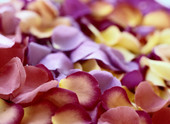
Aromatherapy in Childbirth
In labor with our twins...(July 24, 2003)
The bath
Essential oils
Coconut water
3 midwives
1 doula
2 excited sons (ages 7 and 4)
1 supportive husband
4 hour homebirth
Priceless
"Aromatherapy is easier to administer and costs very little. It changes the whole atmosphere of the birth room. It is not just the mother who can be more relaxed, but the staff caring for her feel calmer and happier too.
Aromatherapy is not a magic charm. But it is one way in which a midwife can communicate warmth, sensitivity and friendship in an institutional and medical environment" .
by Sheila Kitzinger
The Independent, Health Page 21 Oct 1999
Maggie Tisserand recommends; clary sage compress to the lower abdomen.
Apply warm, replace when cooled.
StudiesNursing Times - March 2, 1994, Vol. 90, No. 9, "Using Aromatherapy in Childbirth"
Summary: A study of 500 women in the delivery suite. Essential oils used: Lavender, Clary Sage, Peppermint, Eucalyptus, Chamomile, Frankincense, Jasmine, Rose, Lemon and Mandarin.
Methods of Application:
(1) *Spray of 100 cc water with 2 drops e.o on face sheet, pillow, or bean bag or
(2) 4-6 drops oil in bath or 2-3 drops of oil in footbath or
(3) Inhalation or
(4) Massage with 2 drops in 50 cc of almond oil.
Results: Overall satisfaction with the "aroma" -helped eliminate the hospital smell which decreased anxiety.
Lavender - reduce maternal anxiety, pain relief, lighten mood, calm contractions if woman needed rest (Early in Labor)
Peppermint- Nausea & Vomiting
Clary sage - Increase Contractions
74% of women used no other form of pain relief















